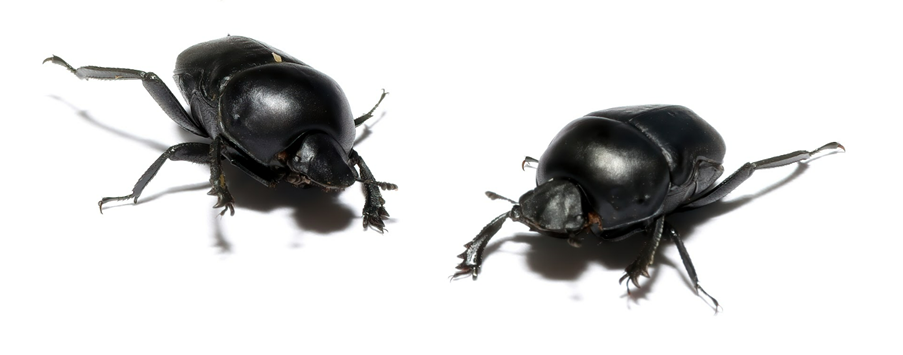 G. sturmi dung beetles. Image credit: Alberto Zamprogna, CSIRO European laboratory
G. sturmi dung beetles. Image credit: Alberto Zamprogna, CSIRO European laboratory
The third and final dung beetle species imported to Australia as part of the Dung Beetle Ecosystem Engineer project is finally here – but how does it differ from the other two species, and what does this mean for red meat producers?
A significant milestone
The MLA-supported Dung Beetle Ecosystem Engineer (DBEE) project reached a major milestone last month – the arrival of a new dung beetle species, Gymnopleurus sturmi, on Australian shores.
Originally expected to arrive in Australia in 2021, the G. sturmi beetles have been biding their time in CSIRO’s lab in France due to COVID-19-related delays. As the pandemic swept across Europe, border closures restricted the movement of researchers and beetles alike.
However, with the world now well and truly out of lockdown, the research team has worked hard to roll out the red carpet for the new beetles on the block.
Here, CSIRO project lead Dr Valerie Caron introduces the G. sturmi species and outlines next steps.
How are G. sturmi dung beetles different to the other two species Australia has already imported through DBEE?
There’s a distinct difference between this species and the two that preceded it, Dr Caron said.
“The first two species [O. vacca and O. andalusicus] are tunnellers, which burrow dung straight into the ground to house eggs and feed larva,” she said.
“G. sturmi is a roller, which takes a chunk of dung, shapes it into a ball and rolls it away to bury it.”
While both of these behaviours reduce surface dung, the two different types of beetles working in synergy speed up the process.
“Tunnellers focus on the middle of a cow pat; rollers take dung from the sides,” Dr Caron said.
“Working together, both types of beetles disperse dung more quickly, deterring flies from laying eggs…and because G. sturmi aggregate on the surface in search of a partner, they trample the cow pat, too. This should further deter flies.”
What does the introduction of G. sturmi mean for Australian red meat producers?
Although these new dung beetles move dung in a different way to the other two species, the benefits of all species are very similar – it just depends what season each species is most active.
Through the act of burying dung, dung beetles can improve the flow of water, nutrients and carbon into root zones, enhancing soil carbon and fertility as well as boosting pasture productivity.
Dung beetles also promote a healthier grazing environment, improving animal health and productivity by reducing the incidence of parasites and bacterial disease picked up through faeces.
“Interestingly, dung beetles are ‘specialists in their field’, with no single species active in all regions across all seasons,” Dr Caron said.
Despite the establishment of 23 introduced species since the 1960s, there aren’t many in southern Australia which remain active in late winter and/or spring. The DBEE project aims to fill that gap, complementing established species to give graziers year-round dung beetle activity.
G. sturmi beetles, which originated in Morocco, are typically active in spring and even into summer. This means that once they’re commercially, the G. sturmi’s benefits will be particularly noticeable around that time of high activity.
When will G. sturmi beetles be released on-farm?
Charles Sturt University will lead a mass-rearing program for this newly-imported dung beetles species with the help of Australian producers through the DBEE project.
“Eventually, G. sturmi will be placed into outside cages to protect them against predators such as ibis, crows and foxes,” Dr Caron explained.
“The producers [involved in the DBEE project] will feed them for a year or more, and all going to plan, we’ll have sufficient numbers to release this new species in the field in spring 2023.”






